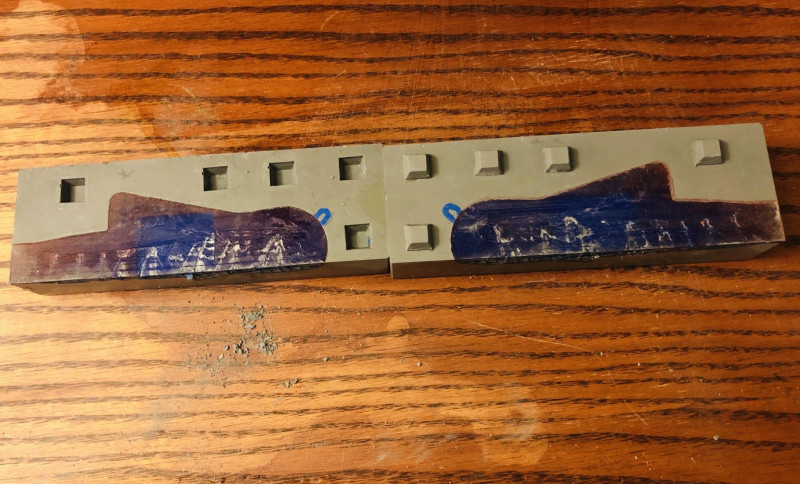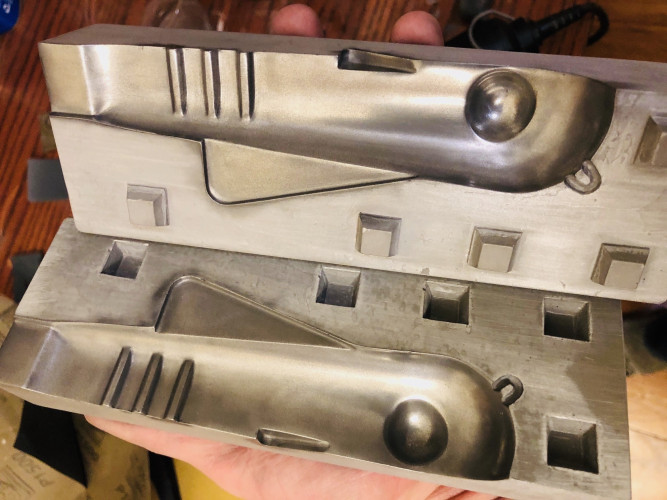Project:
The goal of this project was to make a two part mold for a fishing lure. The mold is an "open pour" style for soft plastic lures which means you pour the hot plastic into the mold from the top (which will end up being the flat bottom of the lure). When the plastic cools it resembles a soft flexible rubber. This mold has an opening in the back to accept different styles of tails.
Printing the models:
I printed the models in two halves to make the mold making easier. Since this is meant for a two part mold, I just split the model into the two halves of the mold.

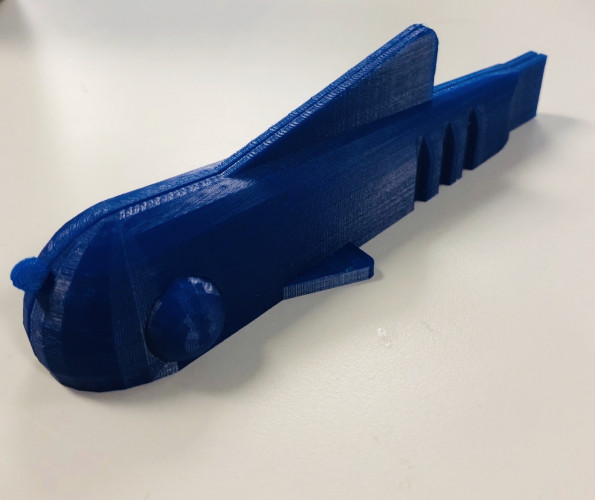
Preparing model to mold:
After printing I lightly sanded any imperfections from printing. I wasn't too concerned with the geometric shapes and the layers at this point. I then sprayed the model with red spray paint followed immediately with a polyurethane spray (see below for issues regarding the painting). I had read about this method to smooth out layer lines on prints. After a few coats of this the layers were smoothed and the model was ready to be molded. I used a piece of glass for the bottom (see below for issues with glass, NOT recommended!) and mad the sides from polycarbonate. I used rubber square sticky pads for registration indents, bumps that will allow the mold to be closed in the same position every time. I sealed all the edges with hot glue to make sure the resin I would be pouring couldn't leak.

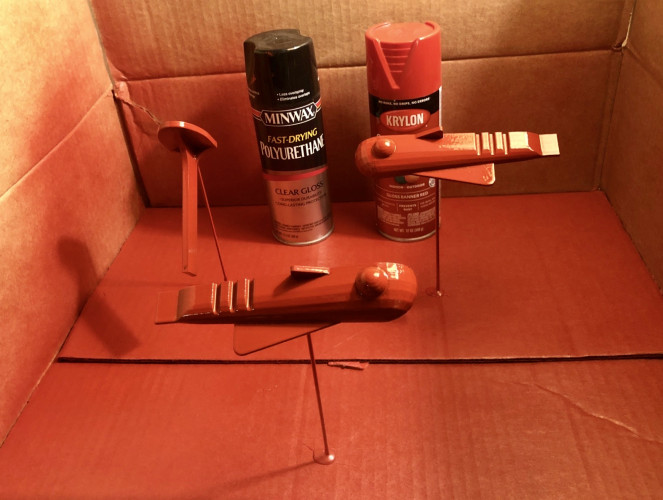
Pouring the mold:
I used an Alumilite product called Vac-Master-50. It is a two part resin with aluminum powder that will help disperse heat when using the mold. This will let the mold last longer. Release agent was sprayed onto the model. The aluminum powder settles to the bottom of the resin and has to be stirred quite a while until the mixture is homogeneous. I estimated the volume of resin needed by simply measuring the box (HxWxH) and ignoring the model inside. This gave me enough plus extra. The resin is mixed in a 1:1 by weight ratio with a working time of 8 minutes and demold time of 2 hours. I found that the parts of the mold not exposed to air were still slightly tacky after demolding, but hardened well after letting it sit longer.
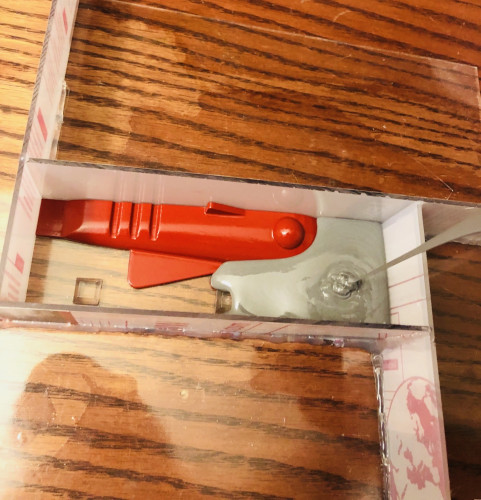
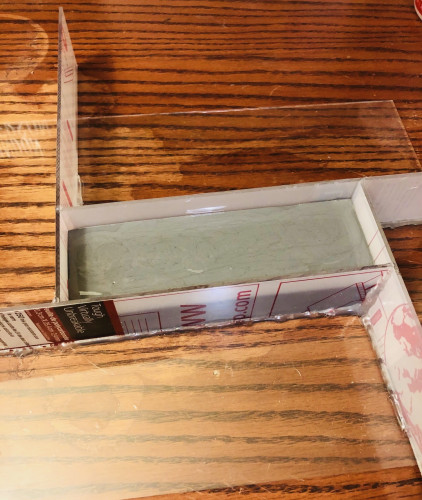
Second half of the mold:
After demolding the first half, I glued the other half of the model in place and made another box with the poly carbonate and poured the second half like the first.
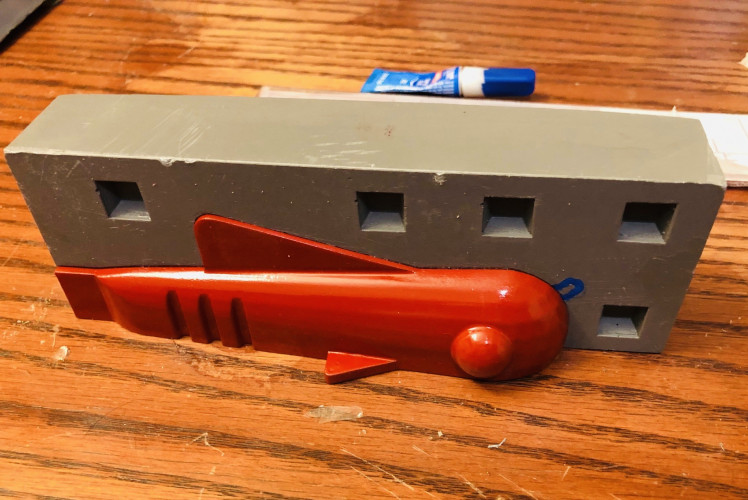
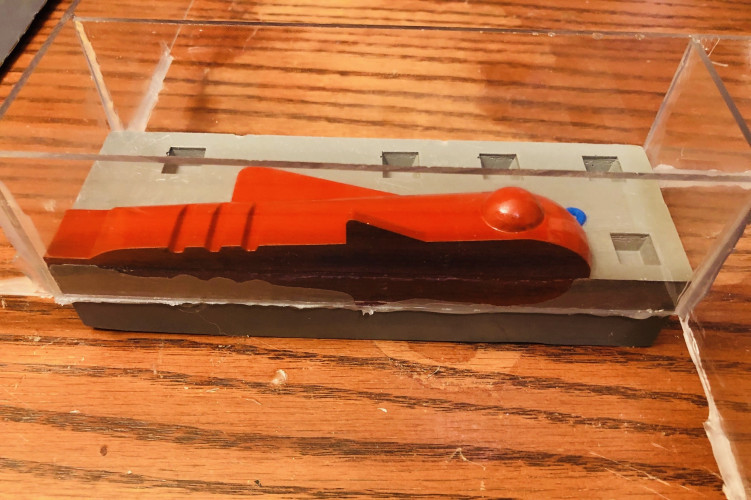
Sanding and finishing mold:
After taking off the polycarbonate, I sanded the sides of the mold before separating the sides. Because of the aluminum in the resin wearing a mask is a must. When separating the sides and demolding the model, it became clear that the resin had bonded to the polyurethane/spray paint. This was unfortunate and required a lot of extra hours of hand sanding and polishing the inside of the mold to finish it. The aluminum resin polishes nice though and the final product resembles polished aluminum in the mold cavity and machined aluminum on the lower grit sanding on the other surfaces. The mold is now ready for the soft plastic lure making.
